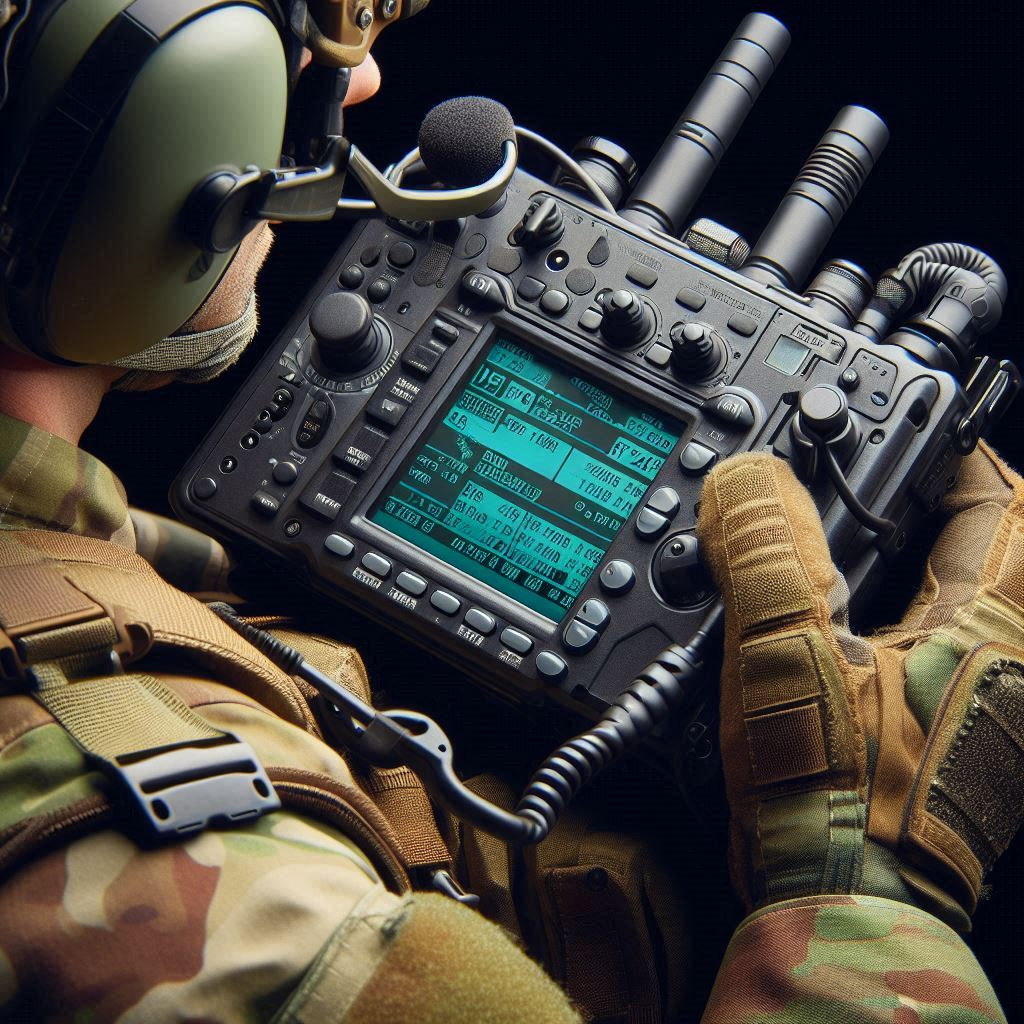Tactical Communication Systems are essential for military operations, providing reliable and secure voice, data, and video communication capabilities for armed forces. These systems ensure seamless communication among military personnel and command centers, facilitating effective coordination, situational awareness, and decision-making in the field. The Global Tactical Communication Market encompasses a wide range of technologies, including radios, satellite communication systems, and secure networking solutions.
Industry Trends
-
Advancements in Communication Technologies:
- Software-Defined Radios (SDR): The adoption of SDR technology allows for greater flexibility and interoperability, enabling military forces to update and adapt communication protocols through software updates.
- Mesh Networks: Deployment of mesh networks enhances the reliability and robustness of tactical communication, ensuring continuous connectivity even in challenging environments.
- 5G Integration: The integration of 5G technology promises to enhance data transmission speeds and bandwidth, supporting advanced applications such as real-time video streaming and augmented reality (AR).
-
Increased Focus on Cybersecurity:
- Enhanced Encryption: To protect sensitive information, there is a growing emphasis on advanced encryption techniques and secure communication protocols.
- Resilience Against Cyber Threats: Development of communication systems with built-in cybersecurity features to detect, prevent, and mitigate cyberattacks.
-
Miniaturization and Portability:
- Compact Devices: There is a trend towards developing smaller, lightweight communication devices that are easy for soldiers to carry and operate in the field.
- Wearable Communication Systems: The use of wearable devices, such as smart helmets and wrist-mounted radios, to enhance mobility and situational awareness.
-
Interoperability and Standardization:
- Joint Operations: Efforts to standardize communication protocols and systems to ensure interoperability among different military branches and allied forces.
- Coalition Operations: The need for seamless communication among coalition forces in joint operations is driving standardization efforts.
Download PDF Brochure: https://www.marketsandmarkets.com/pdfdownloadNew.asp?id=255957957
Opportunities
-
Modernization Programs:
- Upgrading Legacy Systems: Many countries are investing in upgrading their outdated communication systems to enhance operational capabilities and comply with modern standards.
- New Defense Procurement: Increased defense budgets and procurement programs in various countries are creating opportunities for the deployment of advanced tactical communication systems.
-
Technological Innovations:
- AI and Machine Learning: The integration of AI and ML in communication systems to enhance signal processing, threat detection, and decision-making support.
- IoT Integration: Leveraging IoT to connect various devices and sensors, providing a comprehensive and real-time operational picture.
-
Emerging Markets:
- Defense Spending in Developing Nations: Developing countries are increasing their defense spending, presenting new market opportunities for tactical communication solutions.
- Local Manufacturing Partnerships: Opportunities for collaboration with local manufacturers in emerging markets to meet regional demand and localization requirements.

Market Dynamics
-
Drivers:
- Geopolitical Tensions: Rising geopolitical tensions and regional conflicts drive the demand for advanced and reliable tactical communication systems.
- Technological Advancements: Continuous innovations in communication technology enhance the effectiveness and reliability of tactical communication systems.
- Modern Warfare Requirements: The evolving nature of modern warfare, with an emphasis on network-centric operations and real-time data sharing, boosts the demand for sophisticated communication solutions.
-
Challenges:
- High Development Costs: The development and deployment of advanced tactical communication systems involve significant costs, posing a challenge for smaller market players.
- Complexity of Integration: Ensuring seamless integration of new communication systems with existing infrastructure can be technically challenging and resource-intensive.
- Security Concerns: Protecting tactical communication systems from cyber threats and ensuring the security of transmitted data is a critical challenge.
Partnerships and Collaborations
-
Government and Industry Collaborations:
- Defense Contracts: Governments often collaborate with private defense contractors through contracts for the development, procurement, and maintenance of tactical communication systems.
- Joint R&D Programs: Collaborative research and development programs between government agencies and private companies to drive innovation in communication technologies.
-
International Alliances:
- NATO and Multinational Exercises: Partnerships and joint exercises within multinational alliances enhance interoperability and the effectiveness of tactical communication systems.
- Technology Transfer Agreements: Agreements between countries for the transfer of technology and expertise in tactical communication systems.
-
Public-Private Partnerships (PPPs):
- Infrastructure and Logistics Support: PPPs in areas such as communication infrastructure, logistics, and supply chain management can improve efficiency and reduce costs.
Ask for Sample Report: https://www.marketsandmarkets.com/requestsampleNew.asp?id=255957957
Key Companies
-
Harris Corporation (L3Harris Technologies):
- Harris Corporation is a leading provider of tactical communication solutions, including radios, satellite communication systems, and networking technologies.
-
Thales Group:
- Thales specializes in secure communication systems for defense applications, offering a wide range of products such as software-defined radios and satellite communication systems.
-
General Dynamics Mission Systems:
- General Dynamics provides advanced tactical communication solutions, including secure voice and data communication systems for military and defense applications.
-
BAE Systems:
- BAE Systems offers a comprehensive portfolio of tactical communication solutions, focusing on secure and resilient communication technologies for military operations.
-
Leonardo S.p.A.:
- Leonardo provides advanced communication systems and services for defense applications, emphasizing secure and reliable communication solutions.
-
Raytheon Technologies Corporation:
- Raytheon Technologies offers a range of tactical communication products, including radios, data links, and secure networking solutions, leveraging its extensive R&D capabilities.
The global tactical communication market is poised for significant growth, driven by technological advancements, increasing defense budgets, and the evolving nature of modern warfare. Key players in the industry are focusing on innovation, strategic partnerships, and addressing emerging threats to maintain their competitive edge. As defense priorities continue to evolve, the industry must adapt to new challenges and opportunities, emphasizing technological innovation, collaboration, and strategic investment. The future of tactical communication will be defined by its ability to integrate advanced technologies, enhance operational capabilities, and ensure secure and reliable communication in an increasingly complex global security environment.
